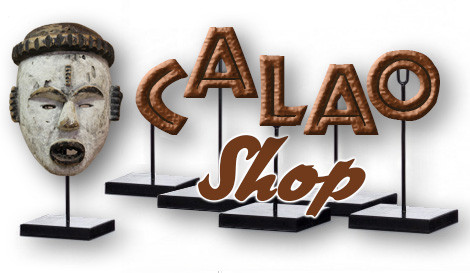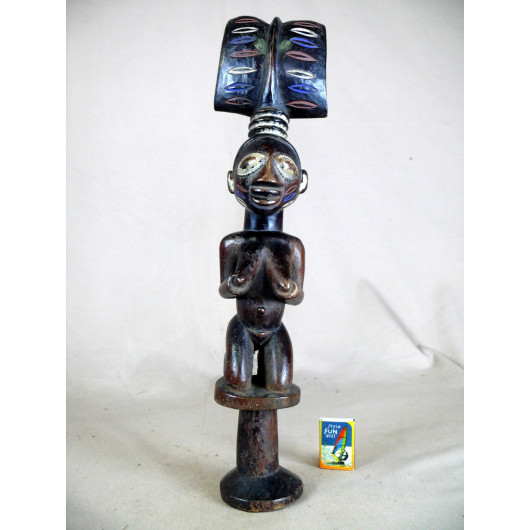Dare Sango Yoruba
The term Sango is associated with lightning...
-
 Secured payment
Secured payment
-
 Free shipping from 150 €
Free shipping from 150 €
-
 Guarantee "satisfied or refunded"
Guarantee "satisfied or refunded"
Very beautiful Sango Osé scepter, made of wood, pigments and kaolin, typical of the Yoruba (Yorouba) ethnic group of Nigeria
Height: 47 cm
The Yoruba people
The term Yoruba (Yorouba) describes both a language and a tribe living in a large area of Nigeria, mainly, up to Ivory Coast via Benin, Togo and Ghana.
The history of the Yoruba has been known since the beginning of the second millennium through the Ife civilization. After the collapse of the Ife kingdom, several kingdoms appeared such as those of Oyo and Ijebu which are still, today, at the base of the Yoruba political structure.
The Yoruba people also have a large diaspora, particularly in America, following the slave trade which strongly affected them.
Yoruba art
Most Yoruba works are linked to secret societies, the best known of which are Gélédé and Epa, or commemorative of the many gods such as Ifa, Eshu and especially Sango. They cover a wide range of varied objects: Masks and crests, of course, which are used for the dances of secret societies, statuettes, the best known of which are the Sango or the Ibeji, but also drums, trumpets, weavings or beaded objects...
The Osé Sango Scepter
The term Sango is originally linked to the fourth Yoruba king who was deified and who was associated with lightning, symbolized by a double axis placed on the head of the sculptures made for his cult.
During the annual ceremonies of the Sango cult, the priestesses sing and dance while holding in their right hand an osé sango; this dance scepter (or dance "stick") always represents a female figure, generally kneeling, carrying a child or holding her breasts (as here) in her hands. The sculpture is topped with the image of the double axe (osé), a reminder of the lightning mastered by the god...









